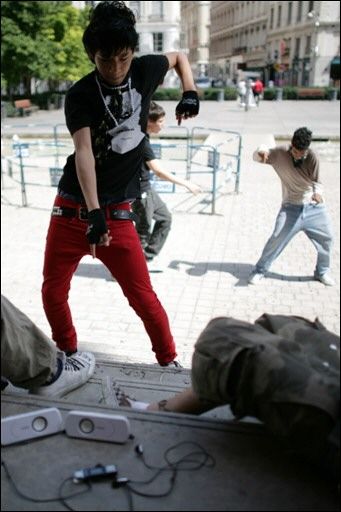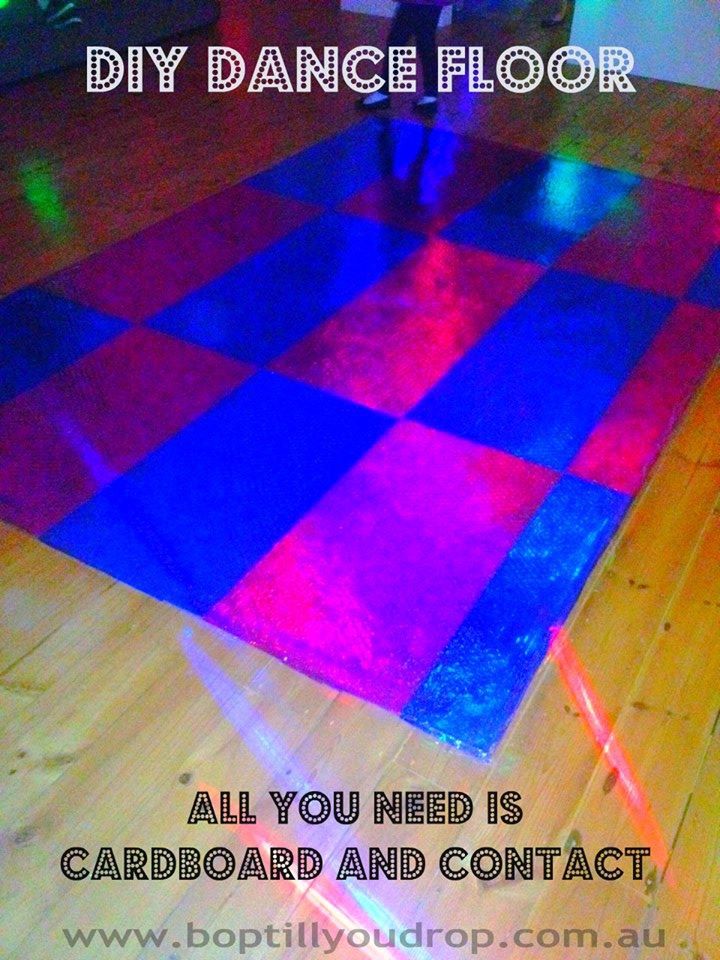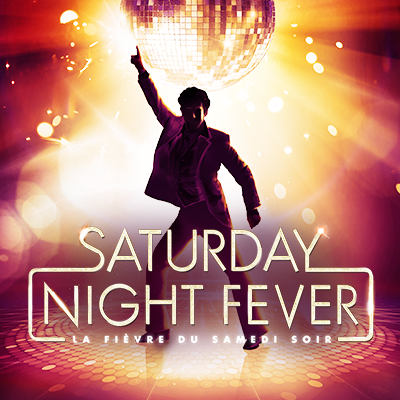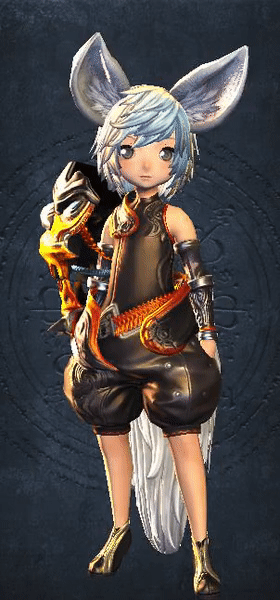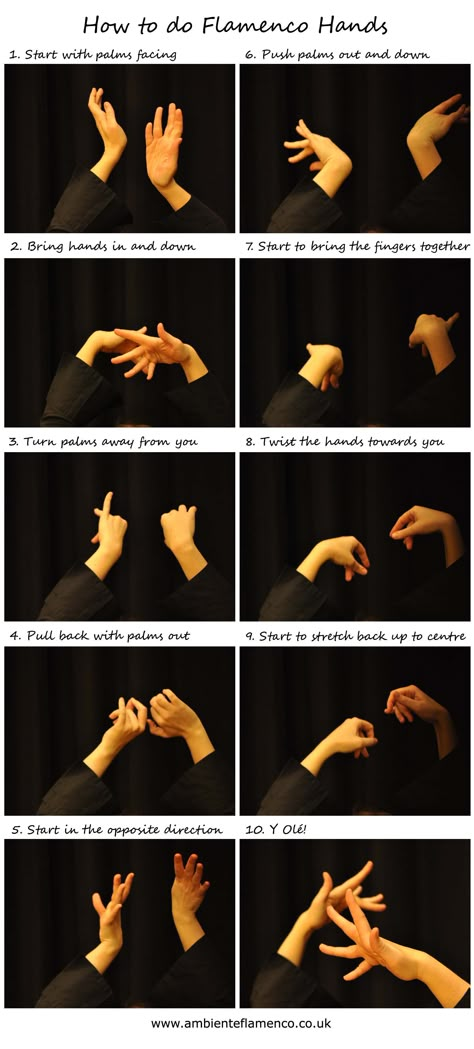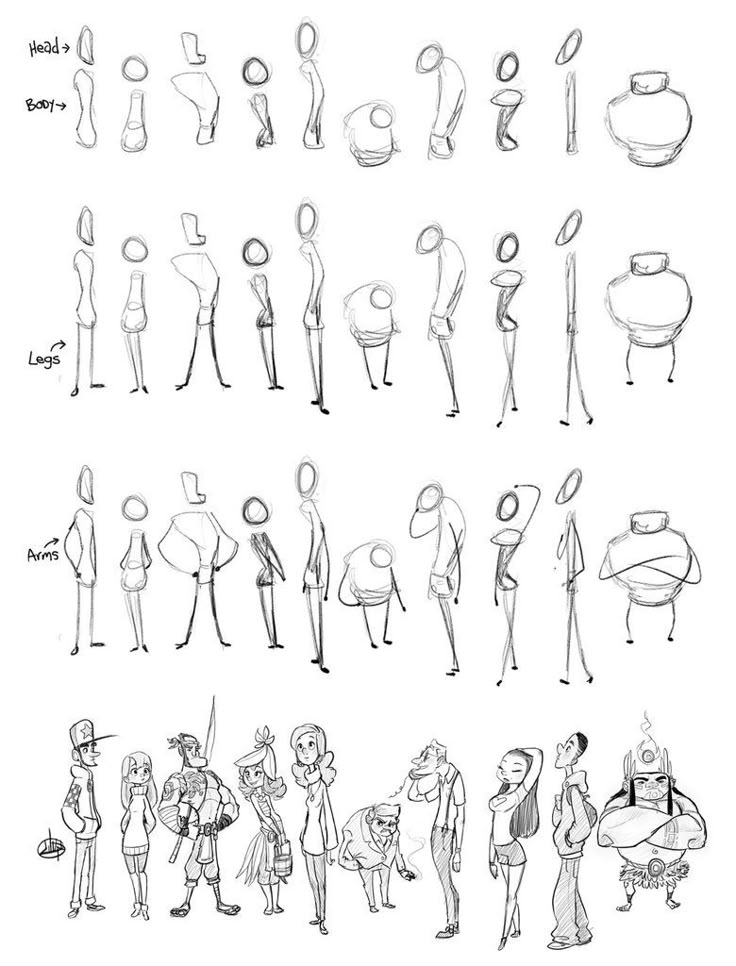How to do the 2 step country dance
Learning the Basic Country Two-Step Dance – Country Dancing Tonight
I started country dancing about 3 years ago and was able to learn how to do the basic Two-Step country dance after a few private lessons. Looking back I realized it wasn’t as hard as I thought and since then have shown many people the basics to get them going and remove some of the mystery about it.
If you are going out for the evening to a country bar to do some dancing, there will most likely be lots of line dancing interspersed with couples partner dancing. Far and away the most popular partner dancing in the United States is the two-step. Drawing from what I’ve learned, this post will give you the basics to prepare you to be ready when you venture out to your local country bar or dance club.
Basic Positions for the Two-Step
In country two-step there is a leader and follower.
Leader: facing your partner, place your right hand under your follower’s left arm and on their shoulder blade.
Follower: facing your partner, place your left hand on your leader’s shoulder seam.
Both: Join your free hands on the other side and hold up and out at about shoulder height.
Notes:
1. After creating this closed position, the leader should position their feet to the left slightly so your toes aren’t pointing directly at each other, but offset slightly. This way you’re less likely to bang your feet together while dancing.
2. It’s important for the follower to lean back slightly into their leader’s right hand and also to put a little pressure with both their left hand (on the leader’s shoulder seam) and with their right clasped hand.
The idea is to keep a fixed amount of space between each other and with this pressure, the lead can push and pull their partner easily. This is known as a good “dance-frame.”
Understanding the Basic Steps for the Two-Step
Two-step dancing consists of two “quick” steps and then two “slow” steps. Knowing when to do these steps is about finding the bass beat of the music being danced to. To get comfortable finding this beat listen to your favorite country songs with this intent. You’ll notice a main beat that you naturally can tap your hand or foot to. In music there is also the “&” beat in-between each basic beat. 1-&-2-&-3-&-4. The Quicksteps are quick because the second one happens on one of these “&” beats. Then you pause or stop for the next “&” and step on the 2nd main beat. This stepping on the “&” beat sometimes and skipping to step on the main beat creates the quick-quick, slow-slow that country two-step is known for.
Knowing when to do these steps is about finding the bass beat of the music being danced to. To get comfortable finding this beat listen to your favorite country songs with this intent. You’ll notice a main beat that you naturally can tap your hand or foot to. In music there is also the “&” beat in-between each basic beat. 1-&-2-&-3-&-4. The Quicksteps are quick because the second one happens on one of these “&” beats. Then you pause or stop for the next “&” and step on the 2nd main beat. This stepping on the “&” beat sometimes and skipping to step on the main beat creates the quick-quick, slow-slow that country two-step is known for.
For me, as a lead this was the hardest and most intimidating part to getting into country Two-Step. I would ask a lady to dance we would go out onto the floor, assume the correct dance frame and then with other dancers already going I would freeze! I couldn’t hear the beat! I couldn’t start! Honestly, there was no immediate fix to this.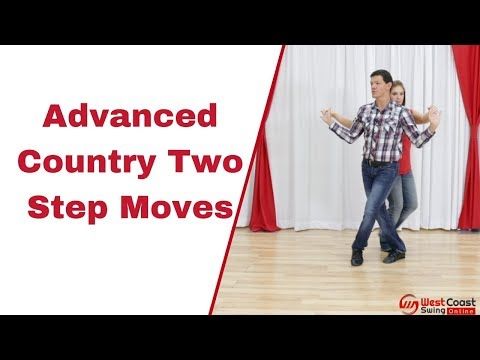 It just took some time getting used to hearing and feeling that beat almost subconsciously and naturally so that now I can begin right away.
It just took some time getting used to hearing and feeling that beat almost subconsciously and naturally so that now I can begin right away.
Tip: I did learn to listen for that beat even before asking someone to dance! This way I was almost already dancing before we started!
Beginning the Two-Step Dance
So, as the lead, there is no absolute beat to start on (like there is with line dancing). You just pick a beat and begin. As the leader, you do signal your partner that you are beginning by leaning in and pushing.
The lead begins with their left foot and consequently, the follower steps backward with their right foot.
Then the 2nd (quick) step is taken by your right foot and the follower steps back with their left.
Then you pause for the “&” and step on the main beat, with your left again, followed by a 2nd “slow” step on your right after skipping another “&” beat.
The diagram above illustrates this.
Line of Dance for Two-Step and Partner Dancing
When you go to any country bar to see partner dancing or any ballroom for that matter you will notice that the direction of traffic on the dance floor is always moving counter-clockwise.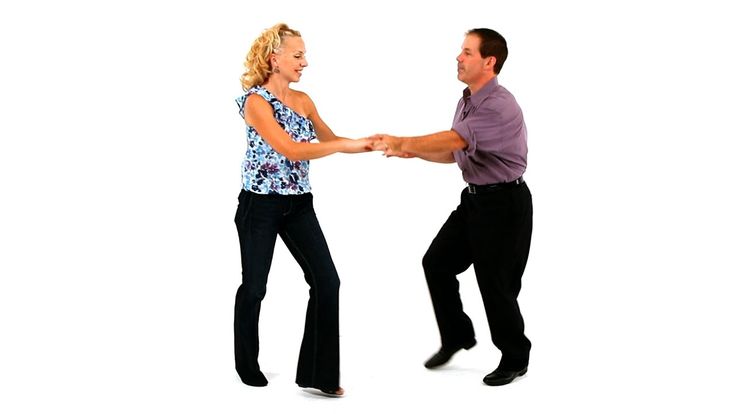 This is a big part of dance floor etiquette and is very important!
This is a big part of dance floor etiquette and is very important!
Notes:
Along with the counter-clockwise line of dance, generally it is understood that the outer lanes are going to be used by the more experienced dancers and (unlike a freeway) is the “fast-lane.” The inside lanes of the dance floor are meant for the slower or beginner dancers. And the more toward the middle of the floor the more it is free of traffic. Occasionally there is a really great couple that wants to do some fancy tricks right in the middle open area—so just keep your head up and watch out! It is also pretty common for country bars to allow for line dancing to a given song to happen in the middle while the Two-Step dancers go around them.The Two-Step is known as a “Progressive” or “Traveling” dance and is always danced in a counter-clockwise direction around any dance floor. This graphic illustrates this as well as where to dance as a beginner dancer (inside lane) or more advanced dancer (outside lane).
Two-Step Dancing Leader & Follower Roles
Leader: As a leader, it is your job on the dance floor to watch and steer your partner safely around the dance floor. After getting a good grasp on the basic two-step, a good next level is to turn your partner and lead backward. However, this doesn’t switch the responsibly to the follower to watch out. The leader now must look over their shoulder and see the traffic and continue to steer the two of you safely around the dance floor.
But of course, if the follower sees a collision about to happen they can try to give a heads up! But its really not their job. The leader is to be aware of the space and try to see all the dancers around.
Follower: As the follower, it is important to help maintain that pressure between you and your leader. This is how you will know what they’re doing. If you are getting your feet stepped on by your lead you may be collapsing in and not keeping that pressure.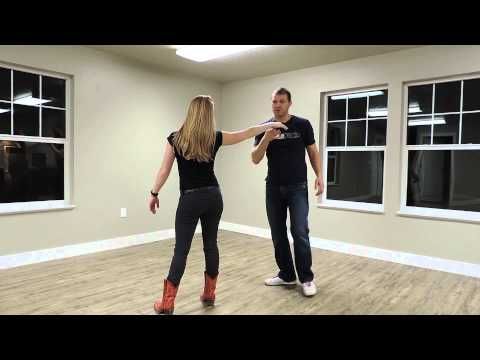
Different Styles of Two-Step Dancing
While the timing for the Two-Step is agreed on universally, there are some differing thoughts about style. This observation of style has to do with timing and is really a discussion for the leader. The main one I’ve heard is how big your steps should be and if your speed is constant or variant. It stands to reason that maybe for a “quick” step you can’t step as far, but for a “slow” step you can take a bigger longer step. But some would say, no, just take longer to make the step! So, all steps are the same distance. I’ve also heard when you do the quick step it should be as if someone “pushes you from behind” hence you’re speeding up at that moment, to then slow down at the “slow-slow.” I don’t think it matters much! The main thing is that as the leader, whatever style feels right for you, you are a good lead and your follow can feel it and pick it up.
Two-Step Dance Routines
The Basic dance frame “closed” position, the steps, timing, how to start and understanding the leader and follower roles is all you need to get out on the dance floor and begin! At this point, you are ready to go out dancing and move around the dance floor – in a counter-clockwise direction!
This all provides the foundation for Two-Step and can be built upon throughout years of dancing enjoyment. The following are a few added dance moves and routines to add to your growing repertoire.
The following are a few added dance moves and routines to add to your growing repertoire.
180º Turn – This is a simple turn of the both of you initiated by the lead. The turn is accomplished by the lead using the first slow to move his partner to the right out of the “track” and then completing the full turn of both partners on the second slow. Then the next quick-quick is the lead walking backward, pulling the follower who is now walking forward.
Outside Turn – Possibly more common than turning around might be just turning or spinning the follower. This is accomplished by a small “prep” or signal to the follower with the left hand and turning them around by pulling their hand away from you so they turn clockwise. They will follow their right shoulder. As they come around the leader will reposition their right hand back under the shoulder blade.
Sweetheart Position – This not necessarily a dance move, but another way to progress around the dance floor beside the “closed position.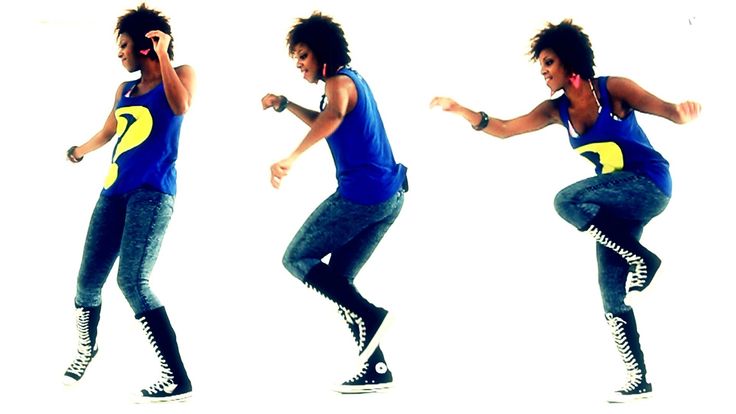 ” When in “closed position” the leader just pulls the follower in for a 1/2 inside turn switching hands. Both partners look forward, both holding right hands in front and left hands held above the follower’s shoulder. The Sweetheart Position gives the follower a nice break from always traveling backward.
” When in “closed position” the leader just pulls the follower in for a 1/2 inside turn switching hands. Both partners look forward, both holding right hands in front and left hands held above the follower’s shoulder. The Sweetheart Position gives the follower a nice break from always traveling backward.
Extra: Once you have this down, try moving to it while the leader is traveling backwards! This forces the lead to be the one turning to walk forward.
Two-Step Dancing Tutorials
This post obviously isn’t intended to turn you into a world-class Two-Stepper overnight! There are many other intermediate and after that advanced routines or patterns to learn! The ones explained above will be a great start and allow you to blend in pretty well with a typical night of Two-Stepping at your local country bar. Below are some great video tutorials showing some of the basics covered above. These videos also add additional tips and will take you farther. Enjoy!
Enjoy!
https://youtu.be/xoscqzFdwB0Video can’t be loaded because JavaScript is disabled: How to Do the 2-Step | Line Dancing (https://youtu.be/xoscqzFdwB0)
To begin with, this brief tutorial from Robert Royston, a 5-time country dance world champion goes over the basics!https://youtu.be/2NPdOQyqCkcVideo can’t be loaded because JavaScript is disabled: HOW TO DANCE TWO STEP – Country Two Step Dancing For Dummies (https://youtu.be/2NPdOQyqCkc)
In this tutorial Anthony and Rose of Country Dance X seek to settle the debate of how to dance the Two-Step once and for all and take a look cause they are legit dance pros!https://youtu.be/4-2MHaNny8gVideo can’t be loaded because JavaScript is disabled: Beginner Country Two Step Dance Tutorial | Basic Two Step Patterns (https://youtu.be/4-2MHaNny8g)
Lastly, here is a more lengthy and equally reliable tutorial from another equally qualified couple going through several patterns for the Two-Step.Two Step Dance | Learn the Basics of Country Two Step
Every beginner country dancer needs to learn the basic patterns for country two step.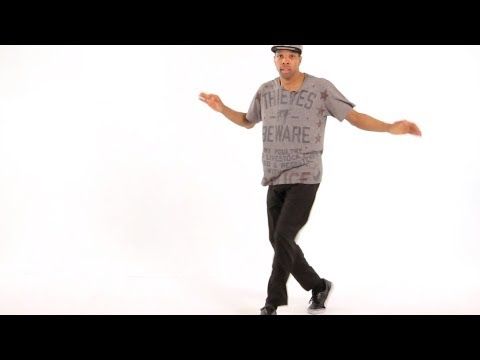 If you want to learn how to country two step, also called progressive two-step, you’re in the right place. Two step is a fun dance that travels around the line of dance with walks and spins to fast country music. First, we need to master the basic steps. Below is a simple syllabus to get you started on the basic two step patterns as a beginner.
If you want to learn how to country two step, also called progressive two-step, you’re in the right place. Two step is a fun dance that travels around the line of dance with walks and spins to fast country music. First, we need to master the basic steps. Below is a simple syllabus to get you started on the basic two step patterns as a beginner.
TAKE ACTION> Download our Basics of 2-Step Video for FREE
Powered by Convert Plus
TAKE ACTION> Jump to the Two Step Basic Patterns on this page
What is Country Two Step?
Country Two Step also known as Texas Two Step is a fun social dance seen in dance halls and country bars all over north america! It’s a partner dance that follows a counter clockwise pattern around the dance floor with lots of spins and wraps. Although it’s typically done to country music, there is plenty of two stepping done to non country music as well!
What is Texas Two Step?
Is it different from Country Two Step, Triple Two Step or Nightclub Two Step?
Texas Two Step is essentially the same as Country Two Step!
It IS different from Triple Two Step and Nightclub Two Step (don’t worry we will explain below)
This is what the basics of Country Two Step AKA Texas Two Step look like.
Remember dance is like language. You’ll find different accents in language across the country just like you’ll find different versions of two step across the country as well. Rest assured Country Two Step and Texas Two Step is all the same dance with slight regional differences.
However there are ‘two steps’ associated with country dancing that ARE different.
Triple Two Step and Nightclub Two Step (AKA Nightclub) are totally different.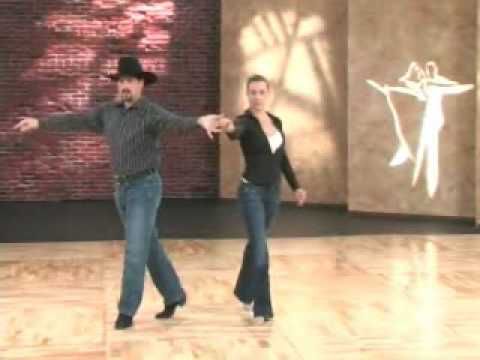
This is NOT Texas Two Step nor Country Two step!
It is it’s own form of two step thought. Confused?
Don’t worry we will make it clear as we go 🙂
What is Nightclub Two Step?This is NOT Texas Two Step nor Country Two Step!
To avoid confusion this dance has changed its name and is just known as Nightclub.
Slightly less confusing 🙂
Country Two Step Basic Patterns
Ok now it’s time to learn the Country Two Step Basic patterns In this beginner two step tutorial you’ll lean all the basic patterns you need to look great on the dance floor, even as a beginner! Lean the basic, the outside turns, the inside turns and the couples turns!
Country Two Step Beginner Patterns
Below is a list of individual patterns that you’ll need to know as a beginner. These are the country two step basics that you’ll need to know to feel comfortable in a honky tonk, dance hall or dance studio anywhere in the world! Sometimes two step is called traveling west coast swing.
Forward Basic in country two step
The man traveling forward and the lady backward in closed or open dance position, walking with a series of four walks to the basic timing of quick, quick, slow, slow. Walks may be dance with either a heel or toe lead. This is a debatable topic among many dance professionals, with camps on both side of the fence (or should I say foot)?! An alternate timing is to count by the numbers: 1, 2, 3, 5 (holding counts 4 and 6, as they are part of the slow beat).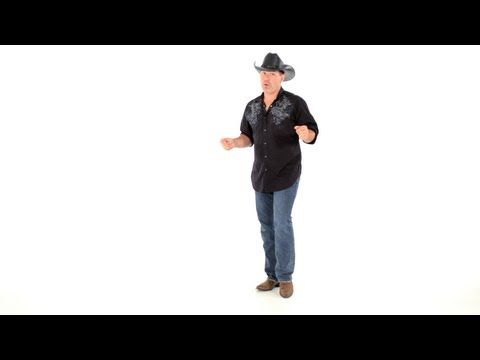
Backward basic and transition from forward to backward for country two step
This is the same as the first pattern, except the man travels backward while the lady walks forward. To transition from the forward basic to the backward basic, there needs to be a few side steps or chasses to smooth the change of direction.
Lady’s Right Turn ending in Promenade for country two step
The man preps the lady for a right, or outside turn, on the second slow. He leads her spin on the quick, quick, and finishes in frame in the promenade position, with both the leader and follower facing the line of dance, ready for the next pattern.
Lady’s Left Turn to Wrap for country two step
The man preps a left or inside turn for the lady on counts slow, slow, by leading a subtle swivel action with his hands and body. The follower turns to the left on the quick, quick, with her arms wrapping up into the cuddle position around her waist.
Lady’s Right Turn to Back Line of Dance for country two step
The man follows the same procedure as the previous right turn for the lady, except finishes with both partners backing the line of dance. This is the preparation for one of the most popular basic patterns, often referred to as a weave or lace. The free arm may be stylized straight out to the side for both the leader and the follower.
Chasse to Forward Line and Back Line
A chasse (or side together side) is danced facing your partner, first ending in a cross over break line, and then repeated to end in the original line, backing the line of dance.
Patty cake Vine
This combines elements of the chasse with the popular grapevine, which cross back, side, and front. Lady’s left turn to back line of dance or face partners. An inside turn for the lady is a great way to transition to different positions on the floor and to end the current position. Inside turns are generally easier for the follower to dance well.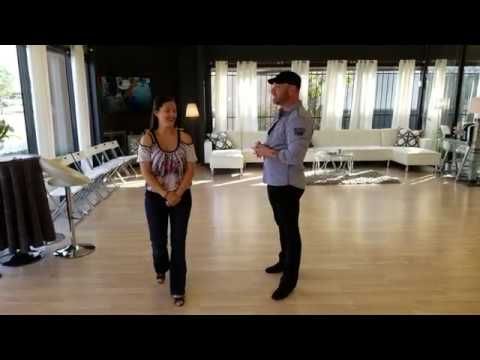
Check weave
This pattern is the heart of the dance. Many intermediate and advanced patterns stem from this one beginner pattern. So it is very important to master and understand the connections for this figure. This step involves an inside turn for the lady. This is similar to the check weave except is danced with a lady’s outside turn, instead of an inside turn.
Two Step Dance Moves
There are an endless set of two step dance moves you can learn. First you need to master the basics. Then the followers have to be comfortable with their spins and turns in two step. Once you’re comfortable, it’s time to start learning some new patterns. The best way to learn them is with a membership to our website. It’s like Netflix for Dancers! All the moves are laid out step by step so you never have to worry if the next pattern you’re learning is within your skill set. We’ve taken the guesswork out. Give it a try!
Country Two Step Music
Now that you’re dancing you’ll need some tunes to dance to. We’ve got you covered. On the other side you’ll get our top 10 Two Step Dance tunes as well as over 100 songs that you can practice to. We have lists for country music lovers AND music suggestions for non country music as well. Winner. See our Country Two Step Song List here.
The next big step in learning how to two step dance!
Inside our members area we have 0ver 500 instructional videos to help you learn all styles of country dance. Two Step, East Coast Swing, West Coast Swing, Cha Cha, Nightclub, Waltz and more. You can grab a free membership and get access to 50 videos to help you improve totally FREE. Grab your Free Membership
Country dance - frwiki.wiki
For the film, see Country Dance.
Country Dance (literally "Peasant Dance" or "Country Dance") or Country Dance is an English dance in XVII - centuries, originally square dance.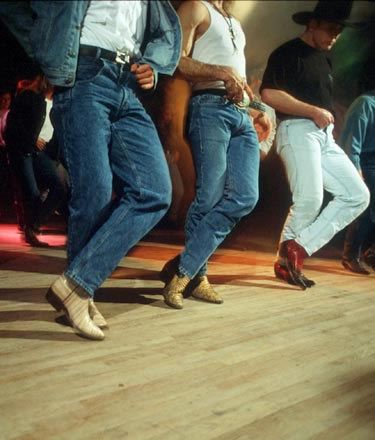
It has four, six or eight dancers or even more. The dancers are arranged in a circle, in a square or in two columns. Very quickly this last formation prevails, allowing the progressive development of the dance to an unlimited number of dancers. If these figures are accurate, initially they do not often remain in the dancer's imagination and settle on in XIX - m .
The first edition of Country Dances dates from 1651, when John Playford published the first edition of The English Dance Master .
Not to be confused with square dance derived from square dance in XIX - th century.
Summary
- 1 General
- 1.1 Principle
- 1.2 Levels
- 1.3 Choreographies
- 2 country in France
- 2.1 Balls
- 2.2 Regular pot
- 3 steps
- 4 Derivatives
- 5 Notes and references
General
Principle
Country dances all kinds of country music: waltz, cha-cha-cha, Irish, rock, pop and even tango, etc. Each music played during a country ball may lead to the performance of one or more choreographies. The same choreography can be performed on several pieces of music. Today it is more than 2000 choreographies. The principle is simple: you need to repeat the choreography on a certain number of walls. The starting wall, called the "12 o'clock wall", is by convention opposite the musicians during the concert, otherwise opposite the audience. The dances mostly consist of two or four walls, but some have only one, while others dance in a circle, in pairs (dance with partners ) or face to face (dance contra ). Some choreographies, such as Lookout , are mostly danced diagonally, i.e. between two walls. Others use diagonals of only a few steps, such as I am running towards you .
Each music played during a country ball may lead to the performance of one or more choreographies. The same choreography can be performed on several pieces of music. Today it is more than 2000 choreographies. The principle is simple: you need to repeat the choreography on a certain number of walls. The starting wall, called the "12 o'clock wall", is by convention opposite the musicians during the concert, otherwise opposite the audience. The dances mostly consist of two or four walls, but some have only one, while others dance in a circle, in pairs (dance with partners ) or face to face (dance contra ). Some choreographies, such as Lookout , are mostly danced diagonally, i.e. between two walls. Others use diagonals of only a few steps, such as I am running towards you .
The choreography consists of 8-beat parts (6 in the case of waltzes). The shorter dances are 16 beats (very rarely less, for example Pick a Bale has 8 beats), the vast majority of dances are 32, 48 or 64 beats, and sometimes much longer.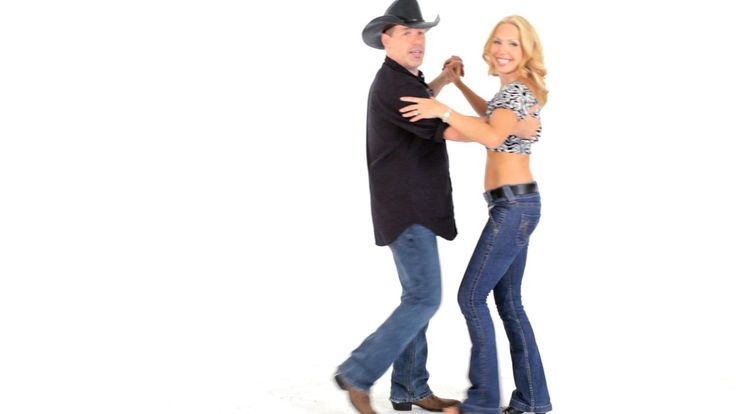 Some like " Where the wind blows" or " Centurion" exceeds 100 beats.
Some like " Where the wind blows" or " Centurion" exceeds 100 beats.
Certain choreographies can contain the tags (part of the choreography is added exclusively) or restart (the choreography starts again at the beginning). Some particularly advanced choreographies combine several different tags and several restarts of . The complexity of the dance is often subjective: it depends, of course, on tags , restarts , the length of the choreography, but also from the beginning, style and many of the sensations that music has.
Anyone can create a country dance choreography if it meets certain criteria. There are some favorite dances that we find very often in ballrooms such as Toes , Home to Louisiana , Irish Stew , Easy Come Easy Go . A dance with as many dancers as possible on the floor, which is usually one of the premieres in the National country dance pot, is country .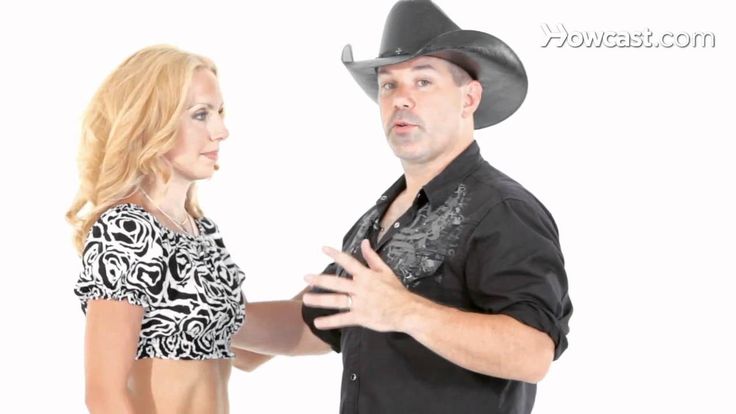
Levels
Country dances include different difficulty levels: beginner, beginner, intermediate and advanced. Dancers may well stay at the same level for several years.
Choreographies
The choreographies below are sorted by level. The level is indicated in the step sheet written by the choreographer.
| Choreography for beginners | Novice Choreography | Intermediate choreographies | Advanced choreography | Other choreographies |
|---|---|---|---|---|
| Cheyenne | Lay | California blue | Holy moth | Billy's Dance ( partner ) |
| Easy come, easy go | Lips so close | Soul Counted | Flame floor | Mexican Wind ( partner ) |
| Hooked the country | Not fair | Doctor doctor | Kansas is no more | Seminole Wind (Circle ) |
| Lindy shuffle | South of Santa Fe | Long hot summer | overnight stay | Texas Waltz ( partner ) |
| Sheriff Tango | White rose | We are tonight | Peaceful Valley | Wanderer ( vs ) |
Country in France
It is thanks to the American Robert Vanstreet (1960-2010) that we are indebted to import country dances to France, thanks to the creation in 1993 in Paris of the first amateur club Les Amis08 Far West 90. He is also the author of several choreographies including Love Dance and Black Pony . Since then country dances became popular, attracting large audiences.
He is also the author of several choreographies including Love Dance and Black Pony . Since then country dances became popular, attracting large audiences.
Balls
Balls are large gatherings of dancers who come to dance, usually taking place on Saturday evenings or Sunday afternoons. There is usually a list of choreographies that will be performed during the ball. The opening dance is often performed in a country style. The ball can also trigger an initiation, and time can also be reserved for dances on request, that is, where the dancers present can suggest the choreography they want to dance to.
During the balls you need to know the etiquette of the route . It is a set of rules, more or less unspoken, based mainly on respect and common sense, which allow everyone to dance in good conditions. We can give some basic rules such as:
- Food and drink are strictly prohibited on the dance floor, as is tobacco.
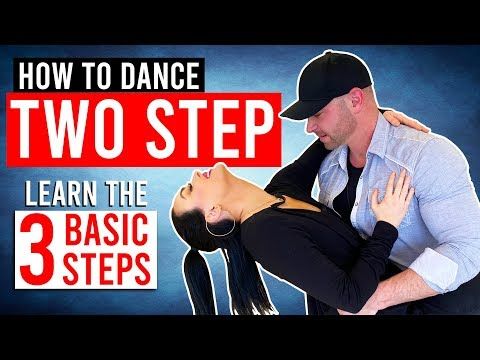
- we do not cross the already formed lines, but simply complete them at the end, or create a new line at the back.
- On the track it is forbidden to carry weapons, even artificial ones, or spurs.
- you must not stay on the dance floor if you are not dancing. In the event of an accident or collision, it is also customary to apologize and replace the glass of the person who was pushed if he knocked it over.
The division of the dance floor must also be taken into account:
- Part 1: the center of the lane is reserved for stationary dances, in a line, without continuous movement along the lane.
- part 2: intermediate part reserved for progressive pair dances or dances with partners, which include, for example, stops and restarts.
- part 3: the edge of the lane is reserved for progressive dances used by dancers in faster dances.
Regular potty
Once or twice a year, animators meet to select dances to be included in the curriculum and balls.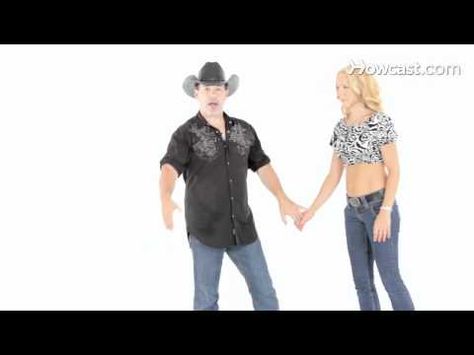 The "National Common Pot" is a short guide that allows every dancer to find what is most popular in France. In addition, each region has its own Common Pot.
The "National Common Pot" is a short guide that allows every dancer to find what is most popular in France. In addition, each region has its own Common Pot.
Each animator offers several choreographies of different levels and different styles. Then the animators vote for their favorite chorea. The choreographies that receive the most votes are elected.
No
Here are some of the most popular country steps:
- Triple Pitch : Three pitches similar to hammered pitch.
- Kick : kick with the end of the foot extended.
- Coaster step : 3-step weight change, back: one leg moves back, the other gathers, the retreating leg moves forward. Forward: One leg moves forward, the other gathers, the advanced leg moves back.
- Rock Step : two weight transfers.
- Grapevine : put right foot to the right, cross left foot behind, put right foot to the right with body weight (also done to the left, and also 1/4 or 1/2 turn).

- Stomping : Foot pose with weight transfer by tapping the heel.
Derivatives
We also find more and more dances called line dance or new line , that is, country choreography in very modern music and non-country genres. If the steps used are the same, these choreographies are more likely to use larger developments, glides. You can give, for example, " Rolling in the Deep" and " Watch It Burn" , who danced respectively to Adele's " Rolling in the Deep" and " Set Fire to the Rain ", Timber's on Ke$ha, or Hey Brother on Avicii.
In response to , the new line, clubs are proposing a return to choreography that is considered more traditional. Steps tend to have a lot of support, with significant use of the heels and toes.
Notes and links
- ↑ "The Legacy of Robert Vanstreet" on the website of association Les Amis du Far West .

Popular dance styles - Dancejam
Dance is a form of performance art, consisting of purposefully chosen sequences of movement. This movement has aesthetic and symbolic value and is recognized as a dance by performers and spectators in various cultures. It is believed that other forms of human movement have dance elements, such as martial arts, gymnastics, figure skating, synchronized swimming and other types of athletics.
Ballet
Ballet originated in the 15th century, first in Italy and then in France. Ballet has influenced many other styles over the centuries. dance and became an independent form of fine art. There are three main style:
- Classic : this shape reached its peak in 19th century France and Russia. The productions are often based on a story and staged with fantastic sets and costumes. Movement emphasizes work pointe shoes, graceful expressions and symmetry.
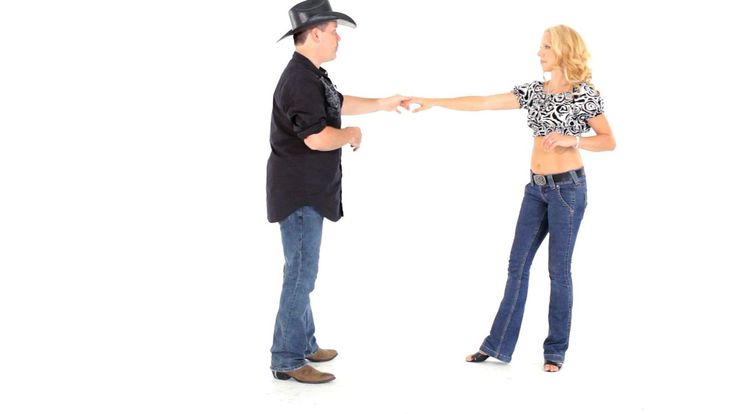
- Neoclassical : this is an evolution of classical ballet that emerged in the early to mid 20th century. Movements are faster and more precise, with less emphasis on symmetry, simple scenery and costumes. The plot is often missing. orchestras, groups or soloists may accompany the dancers.
- Modern movement and physical expression that may not look like dance. Costumes and sets are often simple or abstract. Musical or sound works, if they are used, are modern or experimental.
Jazz
Jazz is a lively dance style that depends from originality and improvisation. Jazz dance has its origins in African American culture. Over time it has evolved into a street dance style, which soon crossed over to jazz clubs in the early 20th century. From ancient times to present, there are many influences that have added variety to this dance form.
Jazz combines all dance styles in a high-energy dance that has no traditional boundaries.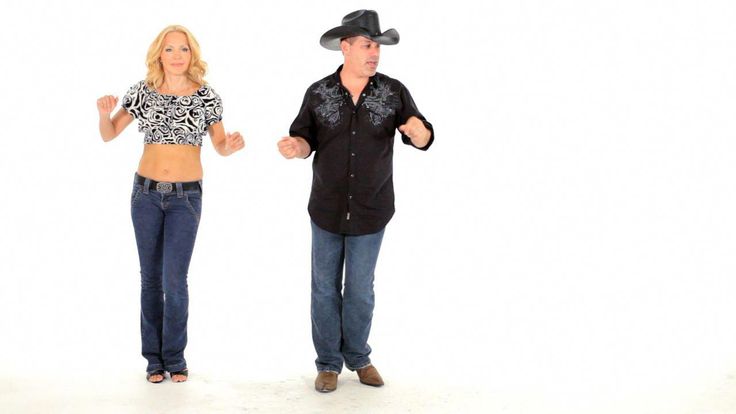 On him influenced by ballet, modern, tap, hip-hop, African dance and many others styles. Jazz is most often accompanied by upbeat, bright and popular songs. Jazz shoes usually have leather split soles, which gives the dancer's foot more freedom to flex and move.
On him influenced by ballet, modern, tap, hip-hop, African dance and many others styles. Jazz is most often accompanied by upbeat, bright and popular songs. Jazz shoes usually have leather split soles, which gives the dancer's foot more freedom to flex and move.
Tap dance
Like jazz dance, tap dancing comes from tradition African dance kept by slaves in the USA. The dancers wear special shoes with metal heels on the toe and heel, which turns their feet into musical instrument. Music is rarely used in this dance.
After the Civil War, the step turned into a popular form of entertainment on the Vaudeville circuit, and later became a staple early Hollywood musicals. The most famous masters of tap dancing - Bill "Bojangles" Robinson, Gregory Hines and Savion Glover.
Hip-hop
Another descendant of jazz dance, hip-hop, appeared on streets of New York in the 1970s in African American and Puerto Rican communities cities at the same time as rap and DJing. Breakdance with its plasticity, acrobatics, stunts and movements on the floor - this is the earliest form of hip-hop dance. Often teams of dancers held competitions to determine which the group has the right to be called the best.
Breakdance with its plasticity, acrobatics, stunts and movements on the floor - this is the earliest form of hip-hop dance. Often teams of dancers held competitions to determine which the group has the right to be called the best.
As rap music flourished and diversified, various styles of hip-hop dance. The most popular are locking and popping, also under the influence of hip-hop, a new style of jazz dance arose, which called jazz funk.
Contemporary dance
Contemporary dance is a dance style that overrides many of the strict rules of classical ballet, focusing on instead, on the expression of inner feelings. It appeared in Europe and the USA in early 20th century as a revolt against classical ballet, emphasizing creative approach in choreography and performance.
Choreographers including Isadora Duncan, Martha Graham and Merce Cunningham, developed methods of reduction, expression of the internal state, movement and breathing, performed under the avant-garde or experimental musical accompaniment. These choreographers have also collaborated with artists working in other areas such as lighting, projection, sound or sculpture.
These choreographers have also collaborated with artists working in other areas such as lighting, projection, sound or sculpture.
Swing
Swing is another offshoot of traditional jazz dance that has become popular since swing bands became the dominant form of popular entertainment in the late 1930s and early 40s years. Unlike other forms of jazz dance, which emphasize individuality, swing dance is a partnership. Couples rock, spin and jump together in synchronous time, usually with a fixed amount choreographic steps repeated in a certain sequence.
Contra
Contra dance is a form of American folk dance in which the dancers form two parallel lines and perform a sequence dance movements with different partners along the entire length of the line. Dance has its roots in similar folk dances from the colonial era Great Britain. Folk music from the British Isles or the USA is the most common form of accompaniment.
Country and Western
Country and Western dance is a broad category of many dance styles, which includes the influence of contrast, folk and even country jazz or western music.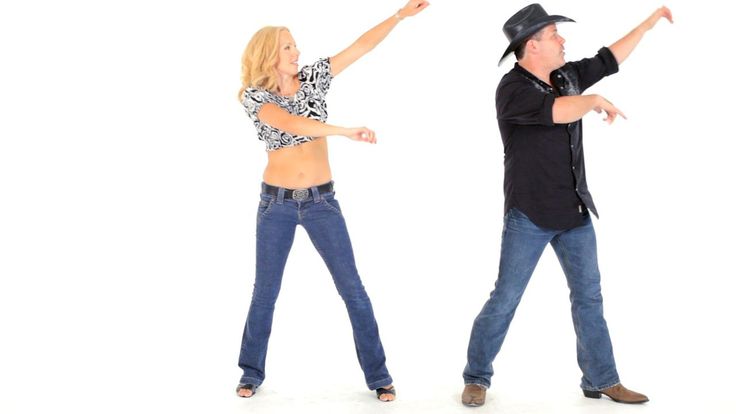 Waltzes and two steps are the most common partner dance forms, but you can also find variations in the polka and other folk dances brought to the USA by German and Czech immigrants. Square dances and line dances where people dance in hard, choreographic positions with several partners or as part of a group, have place in this style.
Waltzes and two steps are the most common partner dance forms, but you can also find variations in the polka and other folk dances brought to the USA by German and Czech immigrants. Square dances and line dances where people dance in hard, choreographic positions with several partners or as part of a group, have place in this style.
Belly dance
Belly dance originated from the folk traditions of the Middle East, but its exact origin is unknown. Unlike most forms Western dances that emphasize intricate footwork and choreography partner, belly dance is a solo performance that focuses on torso and thighs. The dancers combine a series of fluid movements to emphasize the rhythm, hip curves, rotations and vibrations of the torso to add variety and detail.
Flamenco
Flamenco dance is an expressive dance form which combines percussive footwork reminiscent of tap dancing with complex hand and body movements. It originated from the cultures of the Iberian Peninsula in 1700s and 1800s, although its exact origin is unclear. Flamenco consists of three elements: song, dance and playing the guitar.
Flamenco consists of three elements: song, dance and playing the guitar.
Latin dance
Latin dance is a broad term for forms ballroom and street dances that developed in the 19th and 20th centuries in Hispanic Western hemisphere.
Many styles of Latin dance originate in certain region or country. Tango, with its sensual partners and spectacular movements, originated in Argentina. Salsa developed in Puerto Rican, Dominican and Cuban communities in 1970s New York.
Other popular Latin dance forms include mambo, which originated in the 1930s in Cuba; bomb - folk style of rhythmic dance from Puerto Rico; and meringue - Dominican style of dancing with partners and hard hip movements.
Folk dance
Folk dance is a general term that can to refer to various dances that have appeared over the centuries around the world, he has no particular choreographer, his forms have evolved from generation to generation and studied informally.

